Causality Discovery
Introduction to Causality
Definition
- Causality is the influence one event (cause) has on another (effect).
- It implies that changes in the cause lead to changes in the effect, forming a non-random link.
Key Characteristics of Causality
- Directionality: A causes B, but B does not necessarily cause A.
- Mechanism: Changes in the cause generate changes in the effect.
- Counterfactuals: Considers what would happen to the effect if the cause did not occur.
Causality Discovery
Methods
- Experiment-based approach
- Control experiment: Intervention causes changes in outcomes,
- In many cases too expensive, too time-consuming, or even impossible.
- Data-based approach
Overview of Data-based Causal Discovery Methods
Methods
- Constraint-based methods
- PC
- FCI
- Score-based methods
- GES (Greedy Equivalence Search)
- Functional Causal Models
- Linear, Non-Gaussian Model
- Non-linear Methods
- Hybrid Methods
- SELF (Structural Equational Likelihood Framework)
- FRITL (Functional Representation with Independent Triad and Likelihood)
Constraint-Based Methods
Assumptions
- Causal Markov Assumption: A variable
is independent of every other variable (except 's effects) conditional on all of its direct causes. - Causal Faithfulness Assumption: For all observed variables,
is independent of conditional on variables if and only if the Markov Assumption for entails such conditional independencies.
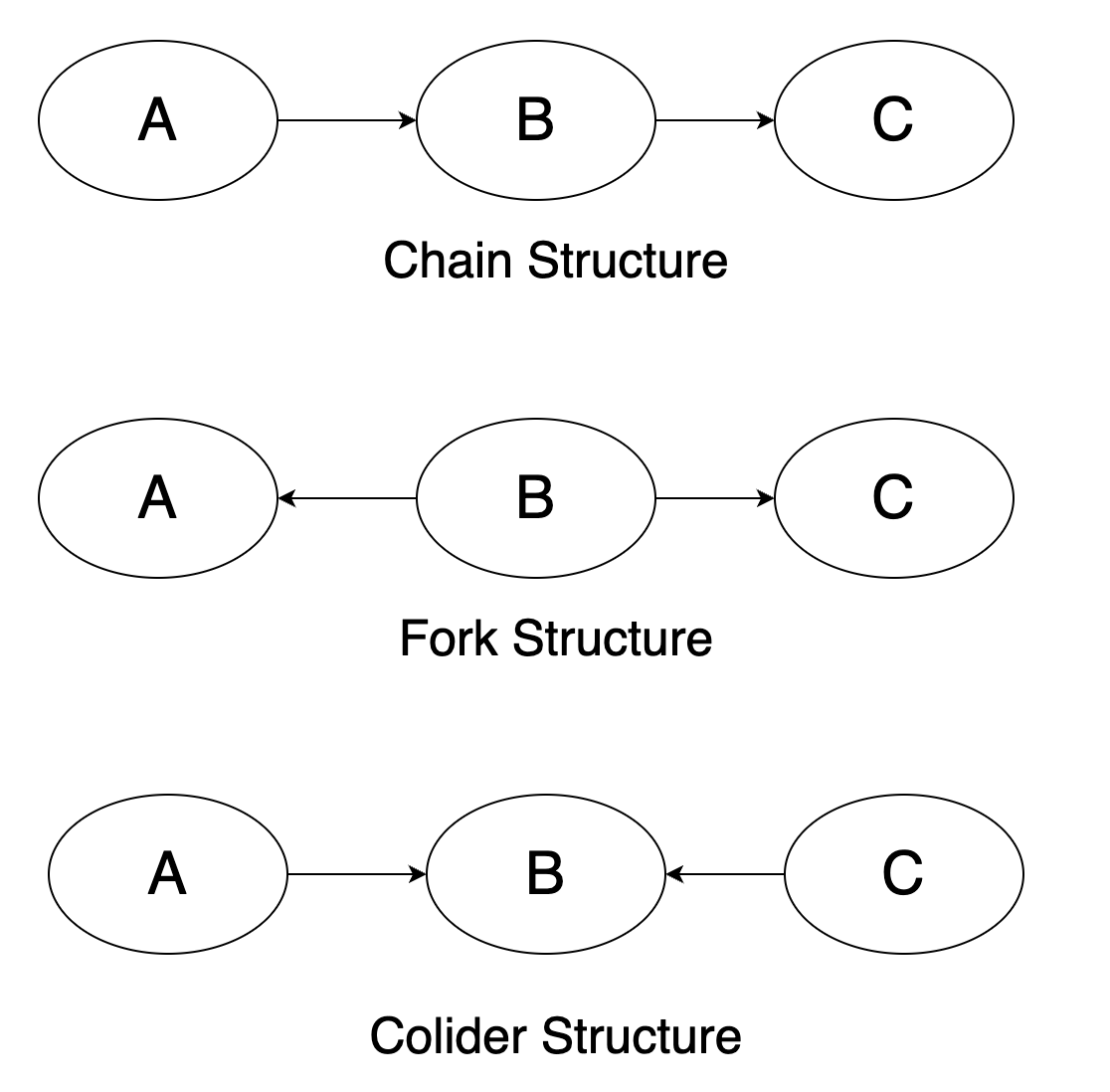
Limitations
- DAGs within the same Markov Equivalence Class cannot be distinguished solely based on conditional independence relationships.
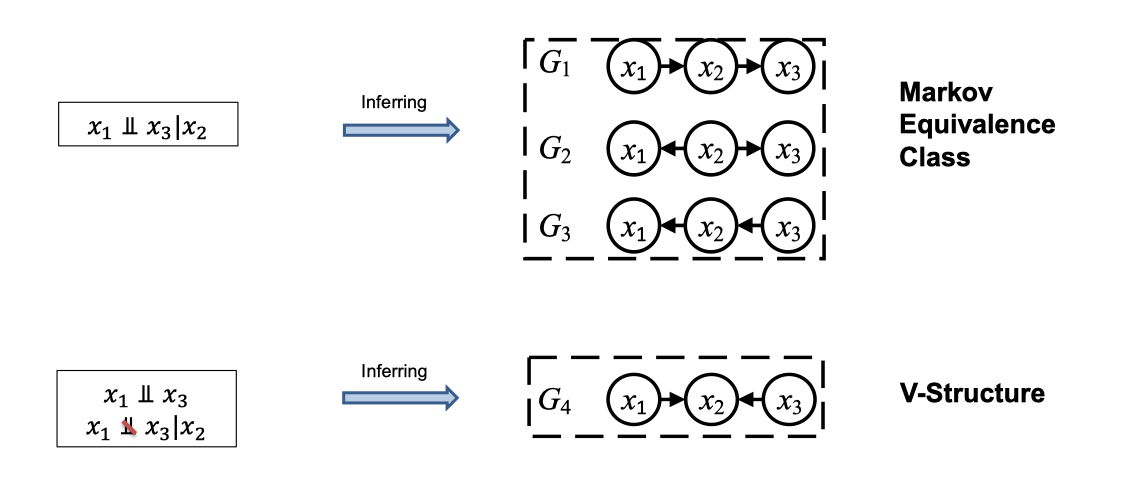
Constraint-Based Method: PC Algorithm
- Initialize Graph: Start with a fully connected undirected graph.
- Edge Removal: Test conditional independence for each pair of variables given subsets of other variables. Remove edges where conditional independence is found.
- Identify Colliders: Orient edges for v-structures
where and are independent unless conditioned on . - Orient Remaining Edges: Use orientation rules to direct undetermined edges.
- Output CPDAG: The result is a CPDAG representing the Markov Equivalence Class.
PC Algorithm Example
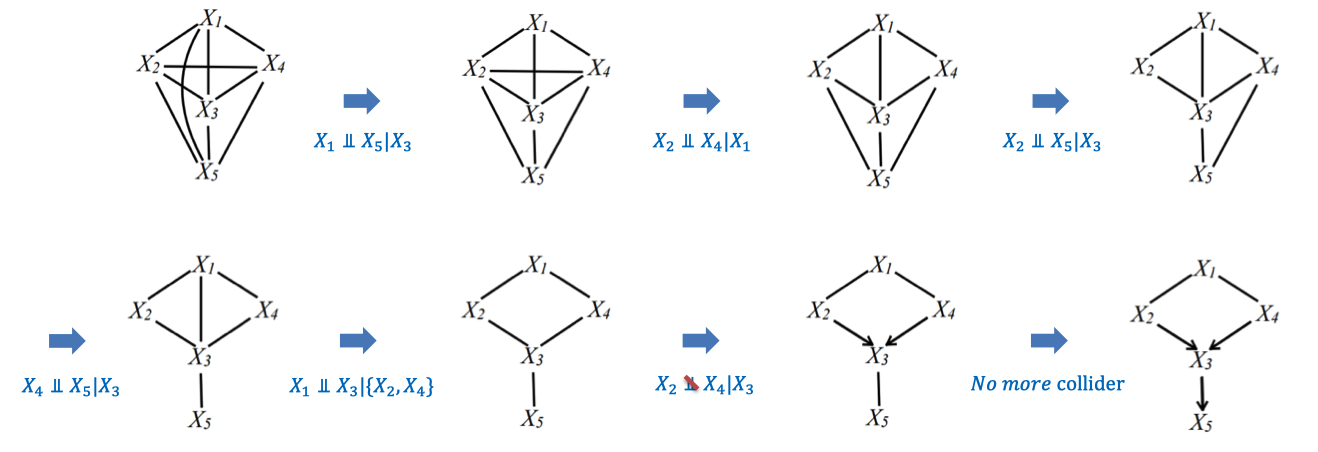
PC Algorithm Limitation
- Limitations: Unable to deal with latent confounders.
Constraint-Based Method: FCI Algorithm Process
- Initialize Graph: Start with a fully connected undirected graph over all observed variables.
- Edge Removal: Test conditional independence between each pair of variables given subsets of other variables.
- Identify Colliders: Identify v-structures
. - Propagate Edge Orientations: Apply orientation rules to propagate edge directions.
- Handle Ambiguous Relationships: Determine possible orientations considering latent variables.
- Output PAG: The result is a Partial Ancestral Graph (PAG).
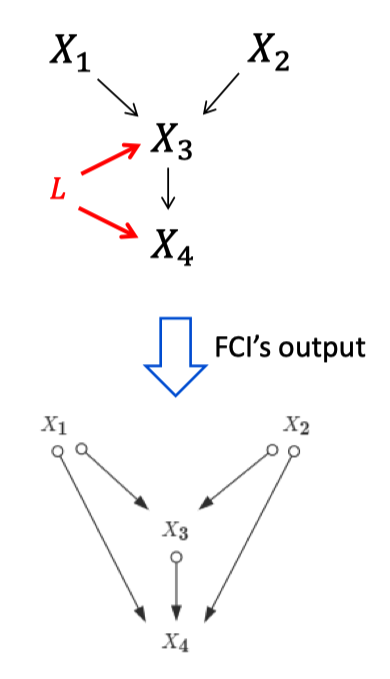
Functional Causal Models (FCMs)
Assumptions
- Independent noise assumption: Independence between the causes
and noises . - Independent mechanism assumption: Independence between the causes
and process .
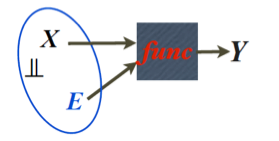
Independent Noise (IN) Condition
- Causal Asymmetry in the Linear non-Gaussian Case:
, where .
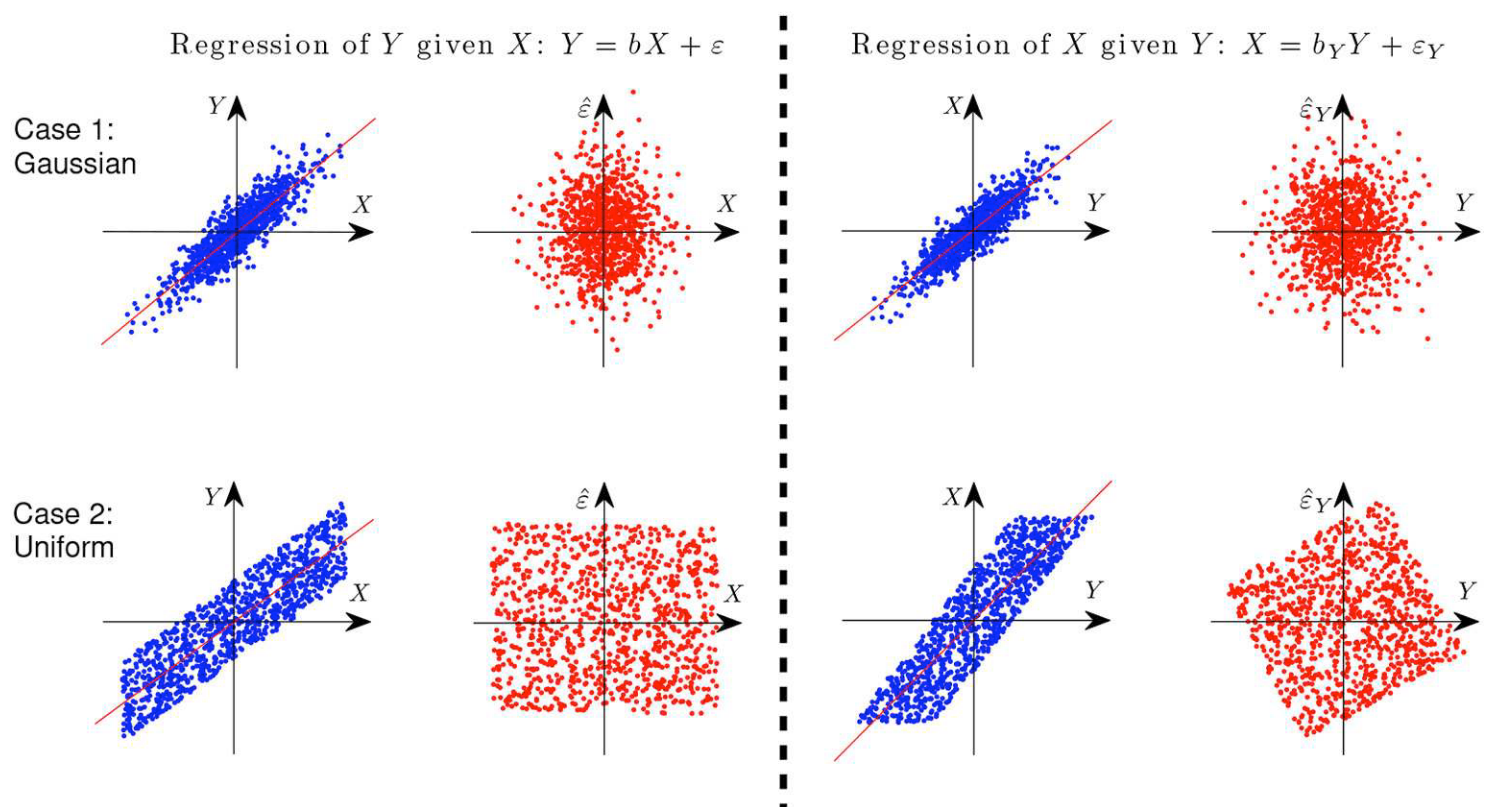
Functional-Based Methods: LiNGAM
LiNGAM Model
- LiNGAM can be expressed as:
- Assumptions:
: observed variables. : connection weights. : non-Gaussian noise vector.
LiNGAM: Analysis by ICA
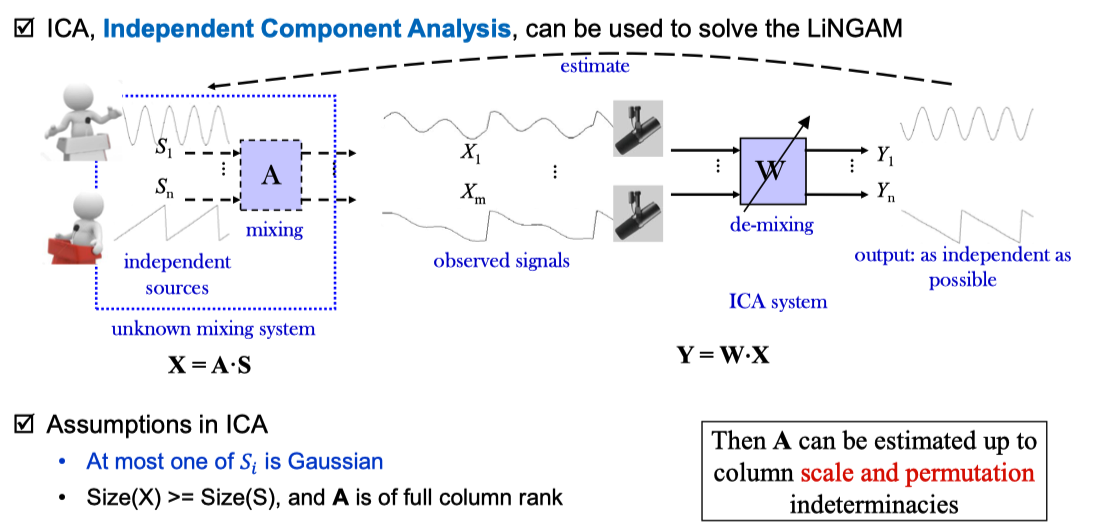
LiNGAM Example
Functional-Based Methods: PNL (post-NonLinear method)
PNL Model:
and are independent. is a non-constant smooth function. is a reversible smooth function.
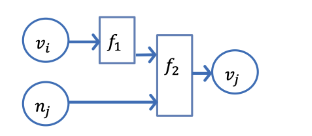
Hybrid Methods
- Hybrid Approach: Combines constraint-based and functional approaches.
- Examples:
- SELF (Structural Equational Likelihood Framework)
- FRITL (Functional Representation with Independent Triad and Likelihood)
Comparison of Methods
| PC | FCI | GES | LiNGAM/PNL/ANM | SELF | FRITL | |
|---|---|---|---|---|---|---|
| Faithfulness assumption required? | Yes | Yes | Some weaker condition required (not totally clear yet) | No | No | No |
| Specific assumptions on data distributions required? | No | No | Yes (usually assumes linear-Gaussian models or multinomial distributions) | Yes | Yes | Yes |
| Properly handle confounders? | No | Yes | No | No | No | Yes |
| Output | Markov equivalence class | Partial ancestral graph | Markov equivalence class | DAG as well as causal model (under the respective identifiability conditions) | DAG with likelihood-based causal structure (assumes observed variables) | DAG or PAG, refined with ICA and Triad condition for latent confounders |

